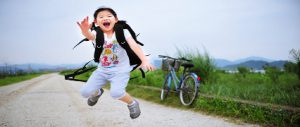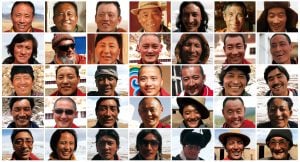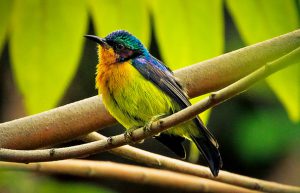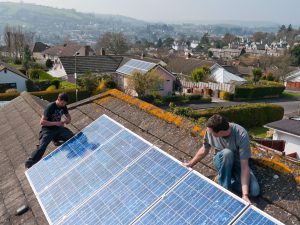Early in my teaching career, I had a student who (no matter how many times I objected to it in print or in person) would refer to everything nonhuman as “the nature.” A simple thing—that article “the”—but it revealed a great deal. “As I walked into the nature, I noticed…” his weekly reflection papers would sometimes begin. The nature—out there, separate from everyday life, something that was its own thing—we go into it, and we come back out of it, returning to the comforts of normal, human life. The city has often been depicted in this way: the nature is out there, beyond the pavement. Here—civilization—is where we humans belong; there—the wilds—is where the nature belongs. But this dichotomy tends to dissolve into the hybrid messiness of everyday reality.
I live in the Chicagoland region, a metropolitan area that includes the city of Chicago and almost ten million people. Its hustle and bustle may, on first glance, seem only to include the motion of people, the screech of trains, the honking of cars jammed on highway arteries. Cities often feel like concrete and steel way stations for people spilling into downtown by day and emptying out by night, urban containers for the persistent pulse of human traffic that fuels modern economies.
But to think cities are only human-occupied environments would be a mistake.
Yes, cities are full of the hubbub of humans, with diverse stories, languages, and cultures. But they are also places of nonhuman movements and ways of being—stories of migration and dwelling.
Some of these animals are returning, finding a toehold; some never left. I’ve seen peregrine falcons (a critically endangered species less than two decades ago) roosting on the third floor of our local library; discovered beaver lodges on the embankment of a city canal; watched in awe as a Cooper’s hawk flew four feet from my face, and as another plucked a songbird clean from a branch directly above my head; and I’ve played hide-and-seek with a pair of coyotes that live on a city golf course a quarter mile from my condominium. The city is a wild place.
Artists, ecologists, philosophers, and social scientists are increasingly turning their eyes upon the city—on the lookout not for the absence or desiccation of animal life but rather for dynamic urban landscapes that provide homeplaces for diverse animal coinhabitants. (Recently published books attest to this interest, from the literary explorations of Lyanda Lynn Haupt’s Urban Bestiary and Esther Woolfson’s Field Notes from a Hidden City; to informative ecological assessments such as Urban Carnivoresand Michael Rosenzweig’s Win-Win Ecology;to practical natural history guides such as Julie Feinstein’s Field Guide to Urban Wildlife.)
Attending to biodiversity in the city has begun to bring various government, business, education, and non-profit groups together as well. Chicago Wilderness, for example, a regional coalition that is composed of over 300 organisations, “with the mission of preserving and restoring the biodiversity of the region,” is quickly approaching its twentieth anniversary. Chicago Wilderness’s recently updated Green Infrastructure Vision maps the possibilities for connecting and caring for wildlife habitat in an urban landscape mosaic. Such regional efforts, which reach across various municipal and state boundaries, are finding common cause with other coalition groups, both in the US (see, for example, the Metropolitan Greenspaces Alliance) and internationally (see, for example, the Wild Cities Project, and the United Nations-affiliated Cities and Biodiversity Outlook).
Once our eyes are opened to the worlds of nonhuman animals, we can begin to see, think, and act in ways that engage urban areas as living social-ecological systems. As part of a project for the Center for Humans and Nature called “City Creatures,” I’ve enlisted the help of numerous collaborators—from poets and painters to entomologists and theologians—to document experiences with urban wildlife that draw attention to these animal presences. Scientific studies are beginning to shed more light on the ecological dynamics of urban areas, but for the City Creatures project, we wanted to take another, complementary route by utilising one of humankind’s most ancient means of communication: storytelling.
Writer John Tallmadge captures why storytelling is critical: “So much of the quality of our lives depends on relationships, which can’t be weighted, measured, quantified, or even directly observed. We use stories to make them visible” (p.24, in The Way of Natural History). Stories, at their best, crystallise what is most meaningful to us; they orient us and hold up a vision of the world—an ethic for how to live well. In the City Creatures project we seek to bring these stories to life, offering an invitation to readers to see the relationship between themselves and the many other animals that give a place its distinct character. An online blog and a forthcoming book associated with the project are structured by the places we encounter animals in the city—backyards, alleyways, balconies, streets, gardens, zoos, natural history museums, pocket parks, cemeteries, urban rivers and shorelines, deindustrialised areas, vacant lots, as well as more formal nature preserves.
Cities clearly can be places of extremes: pollution, habitat fragmentation, poverty, inequity. But urban areas need not be parasitic entities. For better or worse, the city is not a place apart from nature. Urban areas are an integral part of the landscape tapestry and must, in fact, be understood as such if we are to meet the challenges of conservation in the twenty-first century.
Each region, each city—whether in Beijing (see for example Birding Beijing and China Bird Watching Network) or Guangzhou, Los Angeles or Chicago—will have its own particular stories to tell, its own encounters to describe, its own ways to realise how to better create life-supporting urban areas. Attending to animals can help us with this task, re-rooting us in place, offering ways to think about our ecological and evolutionary relationships—our kinship—to those with wings, four legs, six legs, eight legs, no legs … and, yes, those with two legs. Building and inhabiting cities that honour the landscape depends on understanding that “the nature” is not something out there; rather, it is rustling just behind the next shrub, swishing through the nearby creek, and soaring above our heads.





